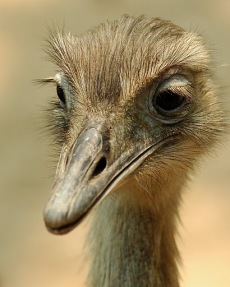From where then does wisdom come? And where is the place of understanding? It is hidden from the eyes of all living, And concealed from the birds of the air. (Job 28:20-21 NKJV)
CLASS – AVES, Order – RHEIFORMES, Family – Rheidae – Rheas
*![]()
Latest I.O.C. Version
Species (2)
Greater Rhea (Rhea americana)
Lesser Rhea (Rhea pennata)
*
On the photos or slides, a “by” indicates one of the photographers or videographers, who have given their permission, with links on our sidebar. Please visit their site to see many more fantastic shots, a “©©” copyright symbol indicates a photo from Creative Commons and ©WikiC is a Creative Commons photo from Wikipedia.
Photographers or Videographers used on this page from our sidebar, Photography, are:
BirdPhotos
Back to Family Page – CLICK HERE
Articles Mentioning Birds From This Family:
- Ian’s Bird of the Moment – Greater Rhea
- Rhea, The Featherless [bald] Lovebird
- Sunday Inspiration – Ostrich, Rhea, Cassowary, Emu & Kiwi
Other Websites that have photos of this Family:
- Rheas (Rheidae) – IBC
- Rhea (Bird) – Wikipedia
*
The rheas are ratites (flightless birds, with unkeeled sterna) in the genus Rhea, native to South America. There are two existing species: the Greater or American Rhea and the Lesser or Darwin’s Rhea. The genus name was given in 1752 by Paul Möhring and adopted as the English common name. Möhring’s named the rhea based on the Greek titan Rhea, whose name is derived from the Greek Rhea (‘Ρέα) by metathesis from έρα “ground”. This was fitting, the rhea being a flightless ground bird. Depending on the South American region, the rhea is known locally as ñandú guazu (Guaraní, meaning big spider, most probably in relation to their habit of opening and lowering alternatively wings when they run), ema (Portuguese), suri (Quechua), or choique (Mapudungun).
Rheas are large, flightless birds with gray-brown plumage, long legs and long necks, similar to an ostrich. Males of R. americana can reach 1.50 metres (4.9 ft), and weigh up to 40 kilograms (88 lb).[2][3] Their wings are large for a flightless bird and are spread while running, to act like sails.[4] Unlike most birds, rheas have only three toes. Their tarsus has horizontal plates on the front of it. They also store urine separately in an expansion of the cloaca.
Rheas tend to be silent birds with the exception being when they are chicks or when the male is seeking a mate. During the non-breeding season they may form flocks of between 10 and 100 birds, although the lesser rhea forms smaller flocks than this. When in danger they flee in a zig-zag course, utilizing first one wing then the other, similar to a rudder.
Rheas have many uses in South America. Feathers are used for feather dusters, skins are used for cloaks or leather, and their meat is a staple to many people. The Rhea is pictured on the coinage of Argentina’s 1 Centavo coin minted in 1987. (Wikipedia)
Some of the Family – Photos are Alphabetical down the columns:





